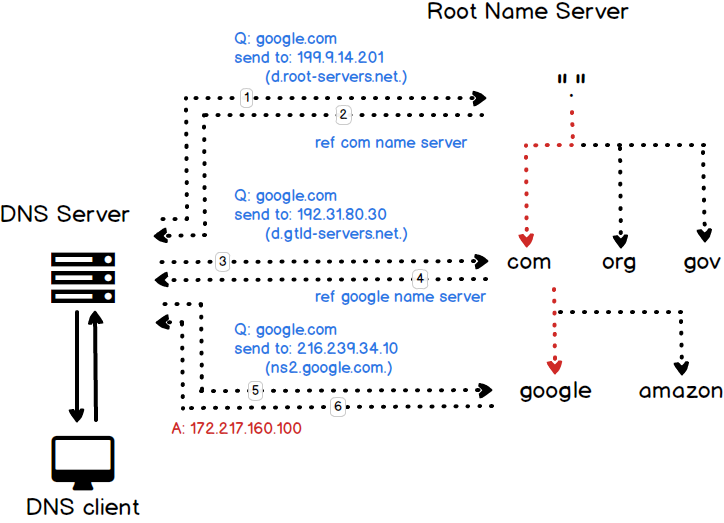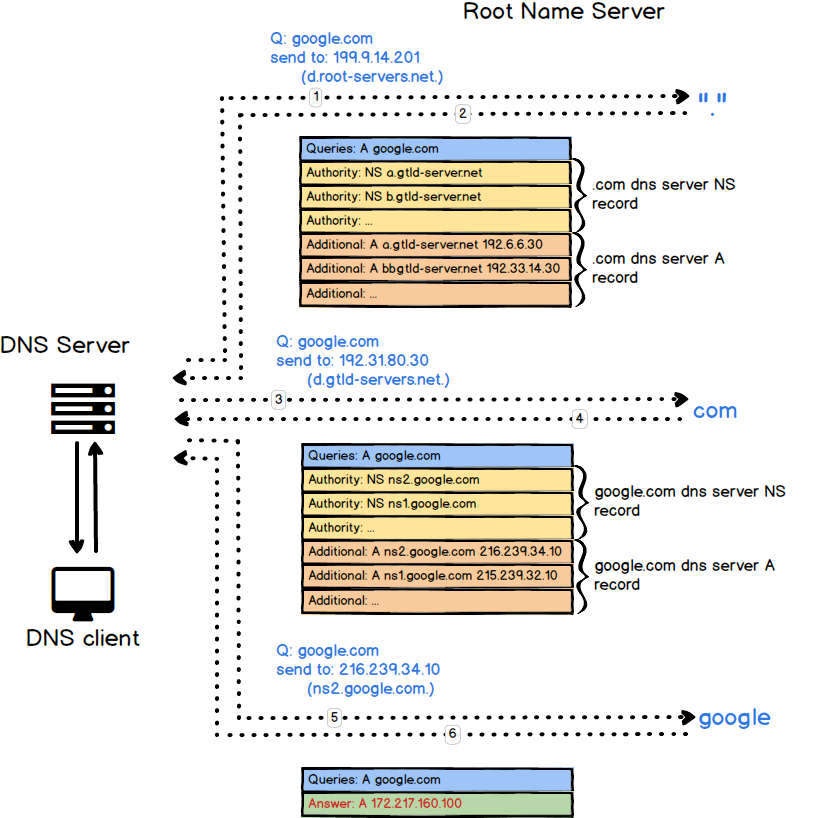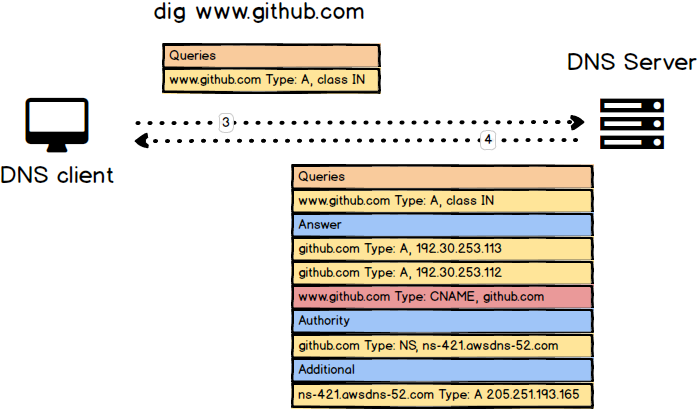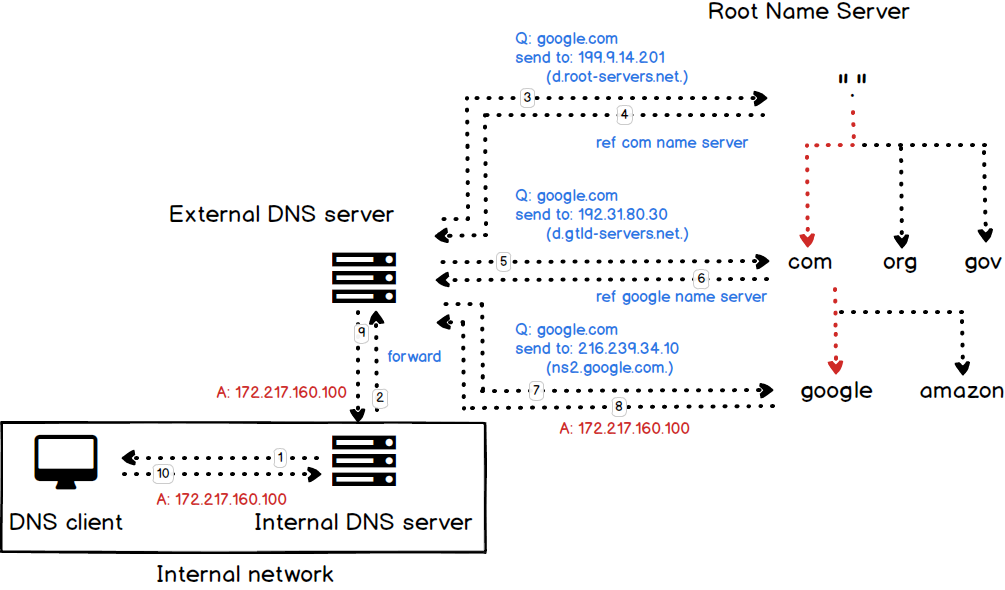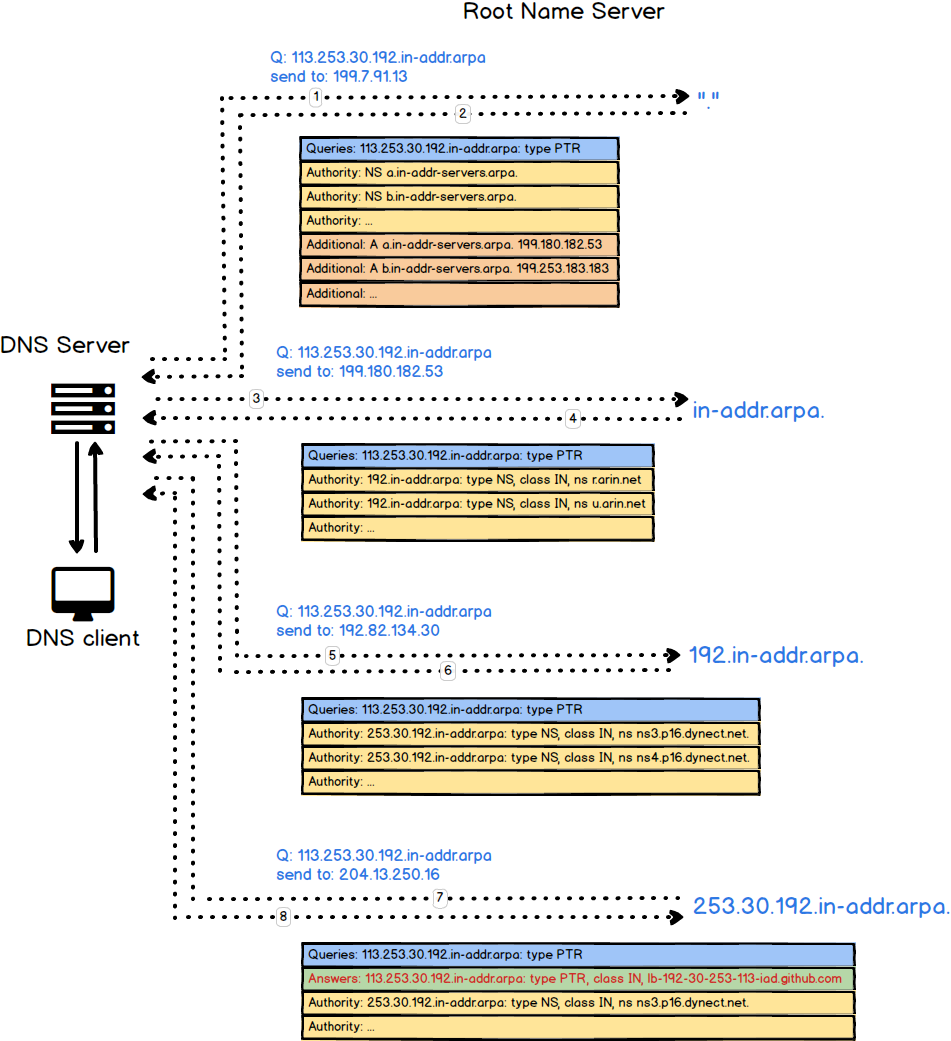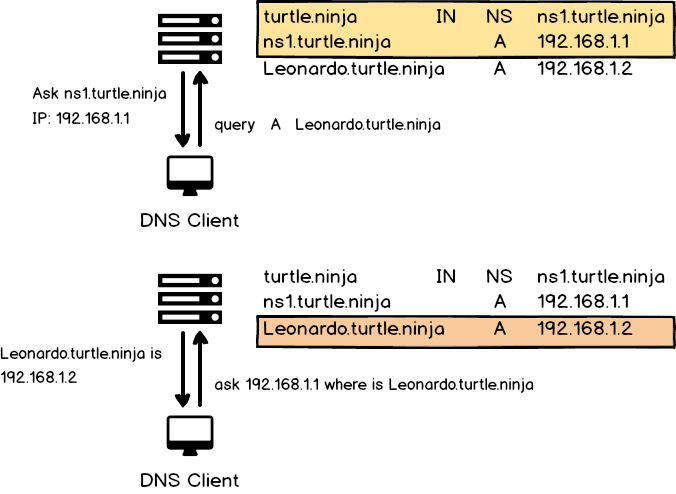An ongoing & curated collection of awesome software best practices and techniques, libraries and frameworks, E-books and videos, websites, blog posts, links to github Repositories, technical guidelines and important resources about Domain Name Service (DNS) in Cybersecurity.
Thanks to all contributors, you're awesome and wouldn't be possible without you! Our goal is to build a categorized community-driven collection of very well-known resources.
- Two type of DNS network activities:
- lookup: DNS client queries a DNS server for information
- zone transfers: DNS server (the secondary server) requests from another DNS server (the primary server)
- DNS lookups are usualy executed usin UDP. (If some of data is lost in transit by UDP, the lookup will be redone using TCP)
- DNS sever uses well-known port 53 (UDP/TCP)
- Proxying characteristics of DNS:
- DNS is structured so that servers always act as proxies for clients
- It's also possible to use a DNS feature called forwarding so that a DNS server is effectively a proxy for another server
- The forwarders directive tells the server that, if it doesn't know the information itself already, it should forward the query to a specific server and let this other server figure out the answer, rather than try to contact servers all over the Internet in an attempt to determine the answer itself.
+---------------------+
| Header |
+---------------------+
| Question | the question for the name server
+---------------------+
| Answer | RRs answering the question
+---------------------+
| Authority | RRs pointing toward an authority
+---------------------+
| Additional | RRs holding additional information
+---------------------+
- Answer: The answer section contains RRs that answer the question
- Authority: The authority section contains RRs that point toward an authoritative name server
- Additional: The additional records section contains RRs which relate to the query, but are not strictly answers for the question
Using dig to trace DNS query flow
$ dig +trace google.com @8.8.8.8DNS server use the field:
- Authority
- Additional
to hint the DNS server to query the another DNS server
$ dig +trace google.com$ dig www.github.comUsing dig to trace DNS query flow inside the internal network
$ internal_dns="192.168.53.53"
$ dig +trace google.com @${internal_dns}dig +trace -x 192.30.253.113 # github.comThe reason is that sometimes we have to deal with the query which send to us directly. The following figure shows this scenario:
If we don't have any NS and A record to point ourselves, the client cannot find the authroizative nameserver
# query A record
$ dig google.com
# query A record with short message
$ dig +short google.com
# query A record and specify the dns server
$ dig +short google.com @"${dns_server}"
# query specific record
$ rtype=txt
$ dig -t ${rtype} google.com
$ dig -t soa google.com
# query records with trace
$ dig +trace google.com
# reverse look-up
$ dig +short 172.217.24.14